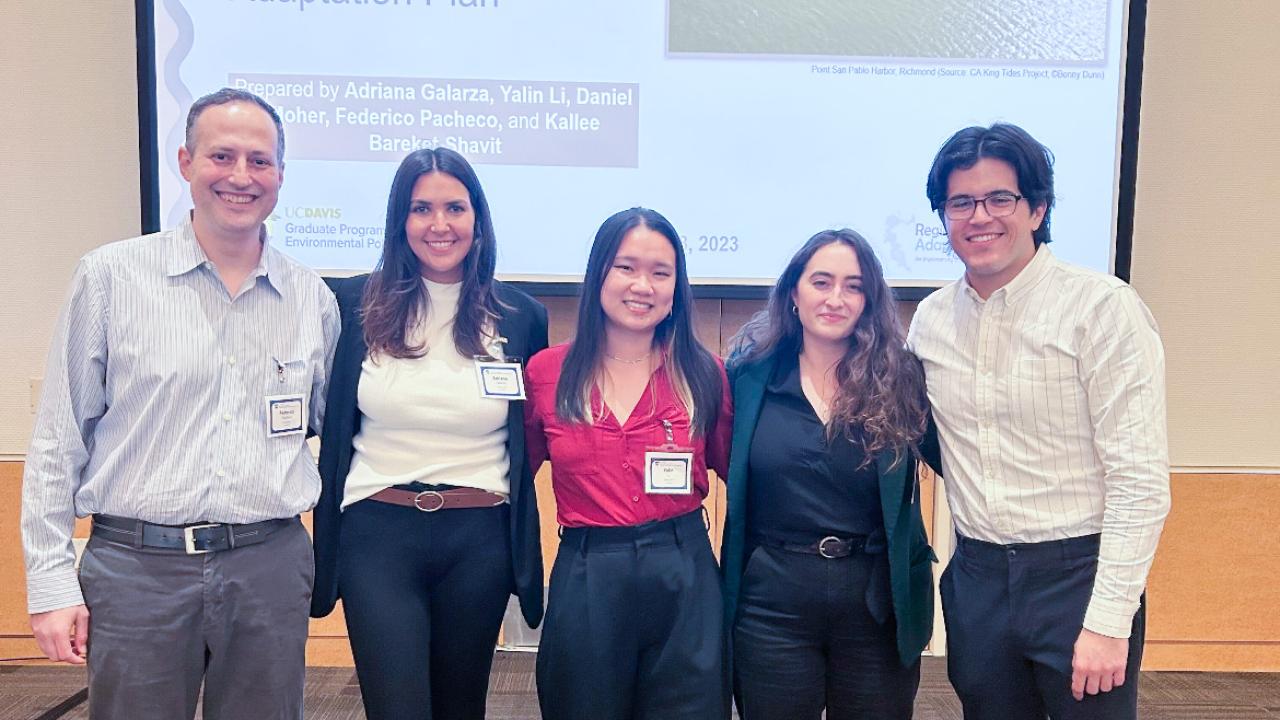
Students Analyze Multi-Benefit Sea Level Rise Adaptation Policies to Support BCDC's Regional Shoreline Adaptation Guidelines
Quick Summary
- Our policy clinic team worked with the San Francisco Bay Conservation and Development Commission (BCDC) to create a multi-benefit policy matrix and a report outlining a summary of best practices for multi-jurisdictional SLR adaptation.
This blog is the fourth in a series of seven, where Environmental Policy and Management students write about the capstone projects they have worked on since January in partnership with external organizations. We want to acknowledge and thank our client, San Francisco Bay Conservation and Development Commission for partnering with us on this project.
Shoreline communities across the San Francisco Bay Area are becoming increasingly vulnerable to rising sea levels, which pose serious threats to infrastructure and disadvantaged communities in low-lying areas. It is expected that the sea level around the Bay Area could rise by six feet or more in the next century with the potential to cause $46 billion in damages to existing infrastructure in the Bay Area. The significance and complexity of this challenge prompted state and local authorities to create a vast collection of comprehensive plans, vulnerability reports, and sea level rise (SLR) adaptation initiatives to address the problem at various scales. But these policies and programs are often fragmented regionally, which creates barriers to developing effective collective strategies. Our policy clinic team is working to address this issue with the San Francisco Bay Area Conservation and Development Commission (BCDC), California’s responsible agency for leading the Bay Area’s preparedness and resilience against sea level rise, by creating a matrix of multi-benefit policies and a summary of best practices.
A multi-benefit policy matrix was developed based on the following focus areas of interest: environmental justice, critical infrastructure, legacy contamination, new/re-development, transportation, habitat, and green infrastructure. For the purposes of the project, a multi-benefit policy addresses one or two more of the topic areas indicated above. This matrix is an organizational framework to highlight and identify policies with a significant crossover between focus areas, which creates opportunities for shoreline cities to address sea level rise issues effectively and efficiently.
We focused our research on five shoreline cities in the Bay Area (Alameda, Pinole, Richmond, San Rafael, and Vallejo) which encompass a diverse range of communities in terms of vulnerability that experience similar threats regarding SLR. Relevant policies pulled from the cities’ adopted General Plans were analyzed in the matrix. We interviewed individuals working in the local governments of the above cities to garner a greater understanding of the applicability of policies, the most pressing policy needs for local jurisdictions, and where the gaps in our analysis lie. The findings from the interview and multi-benefit matrix guided the team in developing our summary of best practices. We recommend shoreline cities look to implement small-scale solutions through heightened land-use planning authority in flood-risk areas. We also recommend shoreline communities partner with regional actors to create large-scale multi-benefit solutions, including creating Collaboratories (working groups) to coordinate multi-jurisdiction actions.
Watch the project presentation
